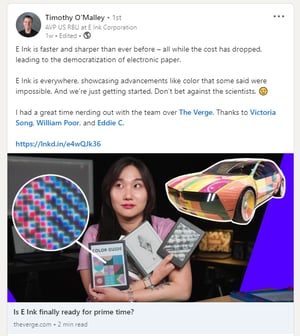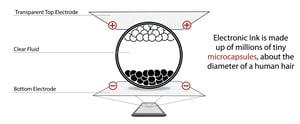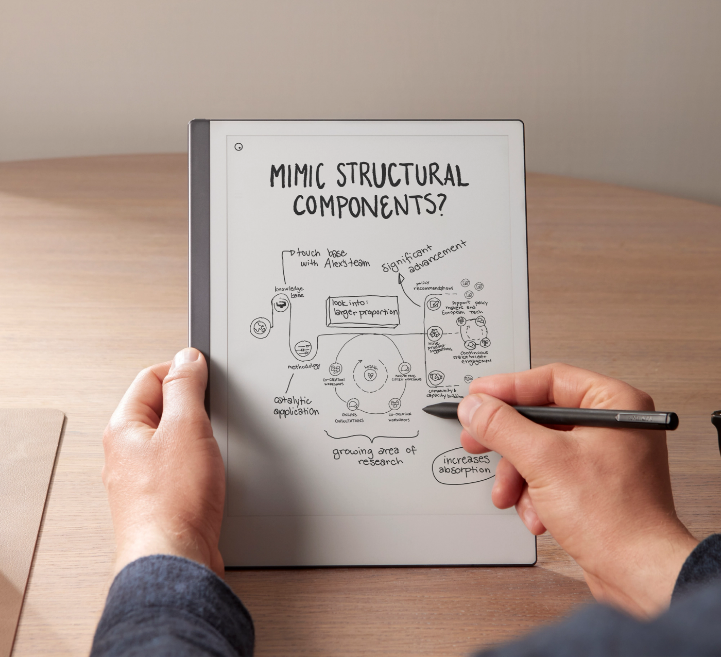In case you missed it, Tim O’Malley, AVP for the US Regional Business Unit at E Ink, recently sat down with The Verge to discuss where E Ink ePaper technology is at now: its basic principles, production process, breakthroughs; challenges in the development of the tech, and the future of E Ink.

Image credit: The Verge
Check out the video interview. It’s a great segment on our journey as a company and how E Ink ePaper technology has matured. Interested in learning more? Read on.
How does E Ink’s technology work, exactly?
E Ink’s two particle electronic ink system is made up of millions of tiny microcapsules, each about the diameter of a human hair. Each pixel on the screen of a display (tablets, eReaders, or signage) is a clear container of liquid, with negatively charged white particles and positively charged black particles floating in the liquid. Applying a charge across the container causes the particles to separate. A positive charge moves the black particles, and a negative charge moves the white particles.
When you add color to the system, that adds complexity: full color performance needs enhanced color spectrum and an advanced color imaging algorithm to make it happen. Check out the detailed explanation here.

Image credit: E Ink
When there’s no power, or no external charge is applied, the particles stay at their last driven location – the essence of bistability: E Ink displays do not need power to maintain a still image.
What are the benefits of E Ink technology?
E Ink does not emit any light. Instead, it reflects the light that’s around you. It’s up to three times healthier on your eyes than an LCD display. Readability is another benefit. ePaper displays are readable at any angle and in any lighting condition.

E Ink transit signage is easy to read, install and relocate.
Image credit: GDS
And because you only need power to change the text or image, E Ink displays are easier on the grid, they help improve energy efficiency, and they are greener for the environment.
How have the refresh rates improved?
Physically moving particles around in liquid makes refresh rates a bit challenging. However, E Ink has made great improvements since the early days.
The update time is about three to four times faster and the contrast ratio is about three to four times higher. And the cost for E Ink devices is about five to seven times lower – E Ink has become more accessible in the market.
In an article in Electronic Design, Tim busted a myth surrounding ePaper’s slow refresh rates. He noted: “Devices like the reMarkable, Kobo Elipsa, and the Amazon Kindle Scribe are on the cutting edge of ePaper. They’re high-res, high-def, and have faster refresh rates of up to 350 ms. These eNote applications also showcase the low-latency with fast-response writing that feels as natural as pen-on-paper.”

Image credit: reMarkable
Will E Ink replace OLEDs and LCDs?
Only those that make sense. E Ink’s competitive advantage is its bistability and low power consumption. There are many opportunities to use E Ink in our daily lives (probably more use cases that you can think of!). E Ink display is a healthier alternative to LCDs – it gives our eyes a rest from an increasingly digital world, reduces power consumption, and builds a more sustainable future.


Leave Comment